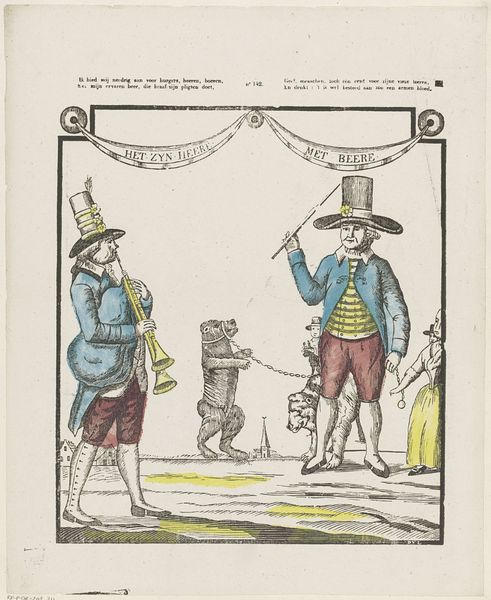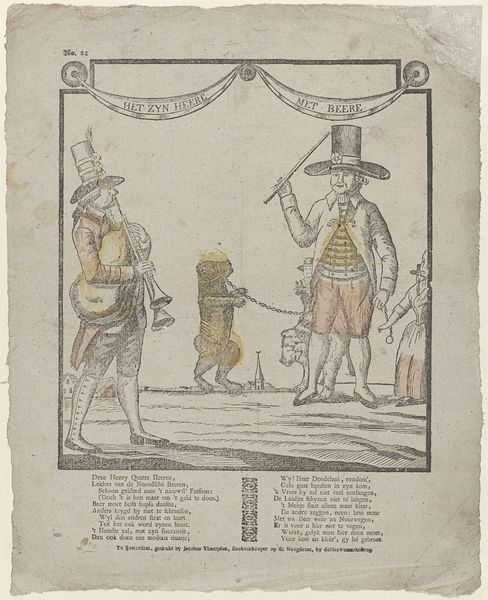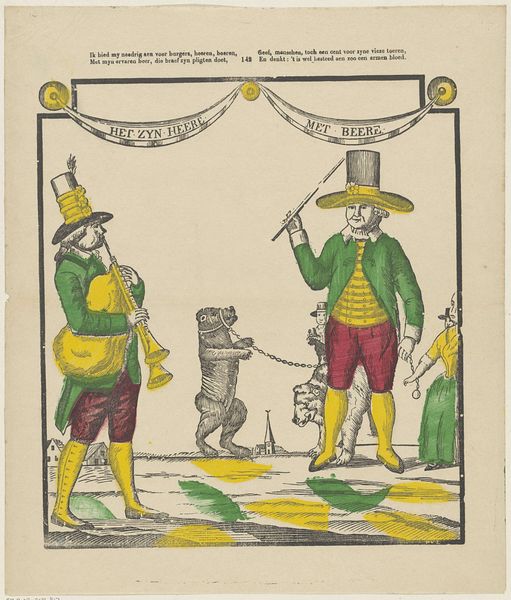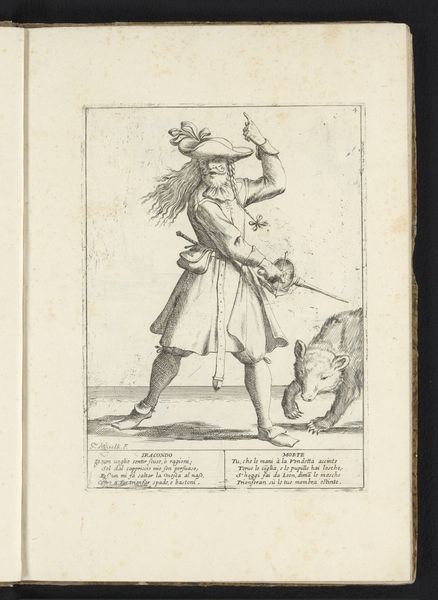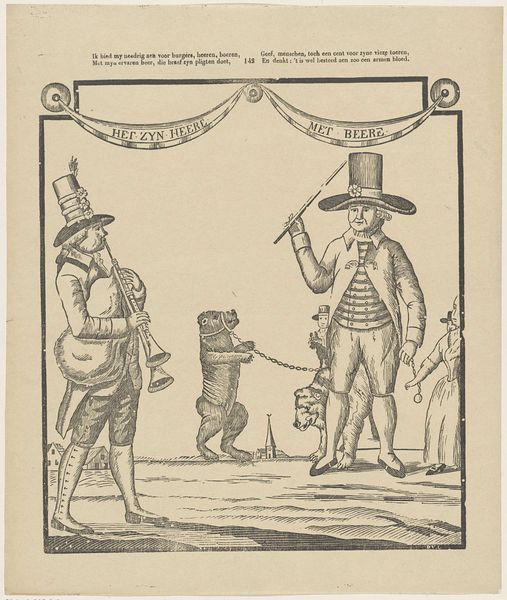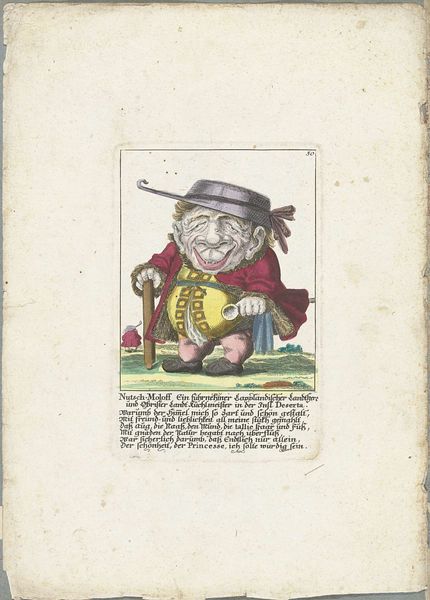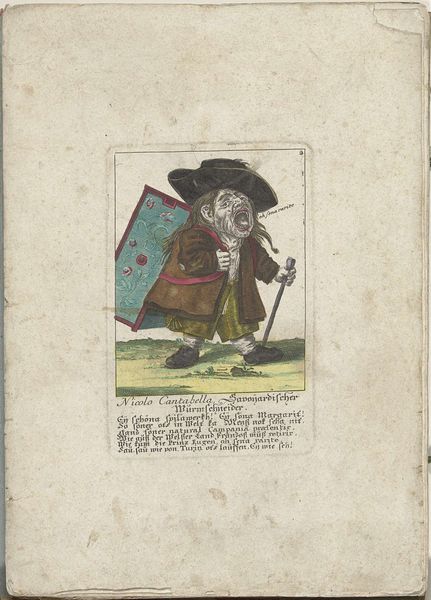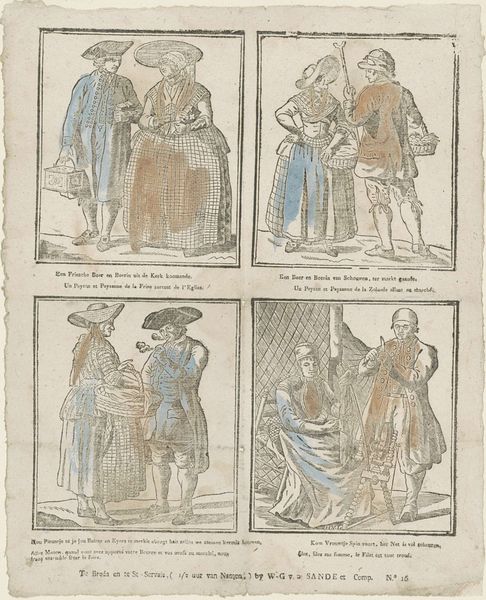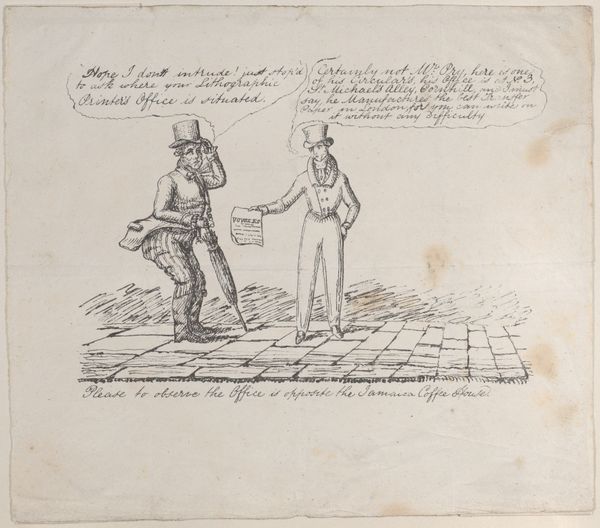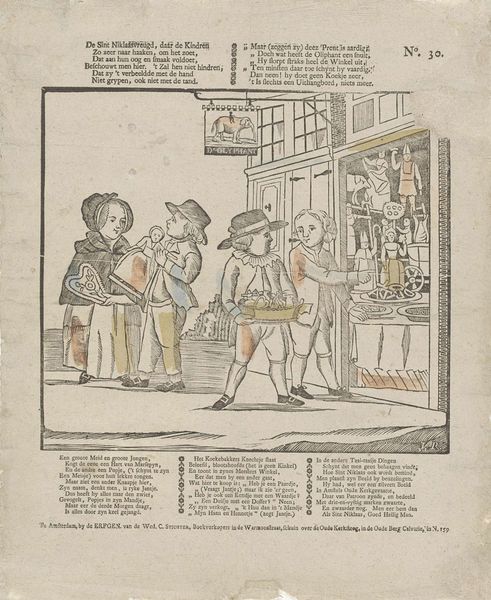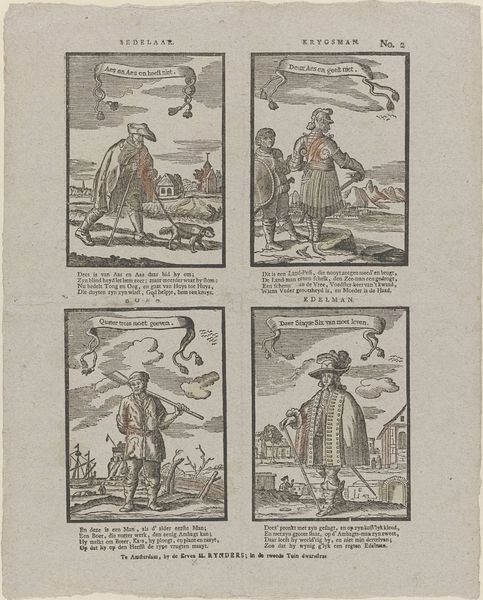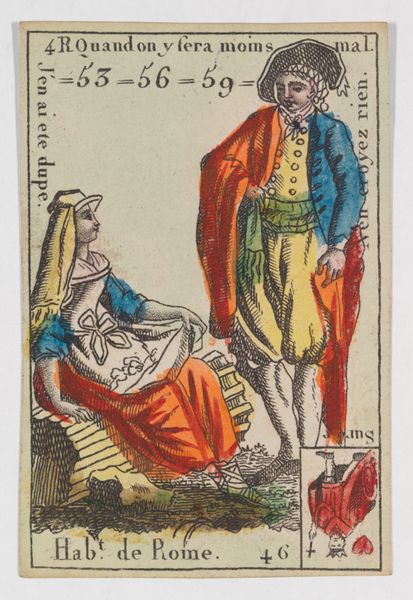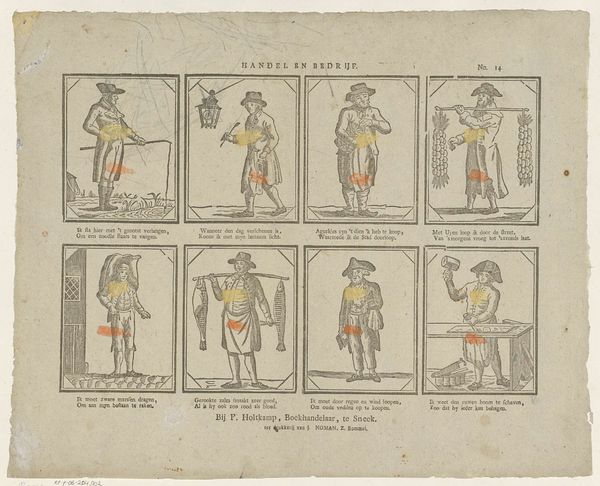
Ik bied my needrig aen voor burgers, heeren, boeren, / met myn ervaren beer, die braef zyn pligten doet, / Geef menschen. toch één cent voor zyne vieze toeren / En denkt : 't is wel besteed aen zoo een armen bloed 1833 - 1856
0:00
0:00
print, engraving
#
dutch-golden-age
# print
#
folk-art
#
genre-painting
#
engraving
Dimensions: height 394 mm, width 332 mm
Copyright: Rijks Museum: Open Domain
Editor: Here we have an engraving titled "Ik bied my needrig aen voor burgers, heeren, boeren, / met myn ervaren beer, die braef zyn pligten doet, / Geef menschen. toch één cent voor zyne vieze toeren / En denkt : 't is wel besteed aen zoo een armen bloed" by Dirk van Lubeek, created sometime between 1833 and 1856. It’s quirky and, honestly, a bit unsettling with its flat perspective and strange coloration. What do you make of this piece? Curator: What strikes me immediately is how this print gives voice to those often silenced in art history: the working class and performing animals. This isn’t simply a genre scene; it's a commentary on social stratification and exploitation. Look at the title, almost a plea – "Give people even a cent..." Doesn't that hint at the precarity of their existence? Editor: It does seem like the figures are performing. The man on the left is playing an instrument. So, the image suggests both entertainment and financial struggle. Curator: Precisely! And the bear, forced to "do its duty." What does it tell us about the relationship between humans and animals during this period? Consider, too, that popular entertainment was frequently seen as morally suspect. Was Lubeek offering simple entertainment, or critiquing broader societal attitudes about class, labor, and spectacle? What purpose did that description about its "vieze toeren" fulfill? Editor: It really reframes how I saw the image. I initially focused on its visual oddity, but understanding the historical context really makes the engraving more compelling. Curator: Exactly! It highlights the value of art history as a social discourse that uses a single print to address concerns of exploitation, inequality, and more. A critical lens opens the artwork into a powerful critique that transcends simple aesthetics. Editor: Thank you; I'll definitely consider all of this in my course work this term!
Comments
No comments
Be the first to comment and join the conversation on the ultimate creative platform.
